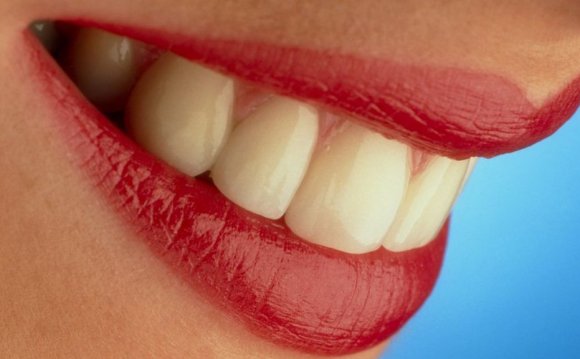
Who doesn't want white teeth? Teeth whitening has become one of the first requests that dental patients have when visiting their dentist. Whitening is defined as any process that can make teeth appear whiter, and most of whitening is accomplished through a product that causes an intrinsic change to the tooth enamel, rather than surface stain removal.
Laser teeth whitening may be an option available at your dental office, but the treatment is not for everyone. Product safety and efficacy is paramount for a good result with little to no side effects.
Your Choices
Tooth whitening or bleaching is the most cost-effective and least invasive procedure that can improve your smile. However, according to a statement by the American Dental Association (ADA) on tooth whitening, these procedures are not without contingencies. It is recommended that any method be supervised by your dentist after the dental exam that determines your best option for whitening. The condition of your teeth and the cause of the discoloration will do just that. Your choices include products purchased by the patient for home use, materials provided by the dentist for home use or procedures performed in the office.
Laser Procedure
Laser teeth whitening is administered in a dental office exclusively, and is the most expensive method for whitening. Bleach is applied to each tooth, and heat generated by a laser enhances its effectiveness while ultimately speeding up the process. This procedure uses a strong bleaching gel that the laser activates and enhances for quick, dramatic results. According to the ADA, the bleach used is a hydrogen peroxide gel that ranges from 25 to 40 percent in concentration levels. With these high concentrations, special precautions are taken to reduce tooth sensitivity, as well as protect the lips, gums and other oral tissues from being damaged. They include:
- cheek retractors
- formulated soft or rubber dams to cover gums
- desensitizing pastes like Colgate® Sensitive toothpaste and
- professional application of fluoride or similar desensitizing product
Your Alternatives
Tooth whitening can be accomplished with over-the-counter products (OTC) and professional systems. OTC products are available in your local drug store or supermarket, and are limited in their percentage or concentration of whitening components. Professional applications can either be for home use or in-office treatment, and elicit better results due to higher percentages of the bleaching agent and the method of their application. OTC whitening or bleaching products come in many forms including:
- toothpastes and rinses
- gel used in trays
- whitening strips
- whitening chewing gum
- whitening paint-on gel
What to Keep in Mind
A laser teeth whitening treatment takes about an hour in the dental office and costs vary but tend to be higher than other methods. The cost depends on the particular system the office has and the system dictates how many treatments are necessary. Oftentimes, several treatments are needed to achieve the desired results and bleaching trays for home use may be needed as well to improve or maintain those results. Not everyone is a candidate for this procedure and a dental exam is necessary before being considered. Also, keep in mind that any whitening treatment is cosmetic and not covered by dental insurance.
Although it is approved by the Food and Drug Administration, laser use in dentistry does not yet have the ADA Seal of Acceptance for safety and efficacy. The organization does report that it is cautiously optimistic about the role of laser dentistry in the future for dental procedures, including teeth whitening.
About the author: Donna Rounsaville, RDH, BS, has been a dental hygienist in private practice for 31 years. She has used her experience with the prevention of dental problems and the importance of healthy eating to educate children in local schools in her hometown of Flemington, New Jersey. Donna is also passionate about infection control and office safety for dental workers, providing yearly training to her office colleagues. She is active as a Girl Scout leader and with children at her church, Donna uses her communication and leadership skills to motivate young people in her community. She has been writing for Colgate since 2013.









